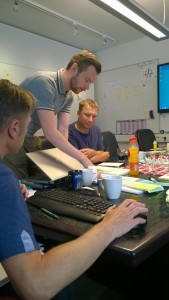I recently attended a course (the excellent LeanUX course held by my colleague Martin Christensen) and again the topic of what a MVP is or is not came up in a discussion. In the Lean startup-world an MVP is defined as the smallest thing you can make to validate a hypothesis which helps you decide if you should continue developing something or if you should stop. For more information about this, I suggest you read Eric Ries’ blog post on the topic. However, in (very) many companies and organisations the term is used to describe the first version of a product released to the end customers. This “version one release MVP” usually contains as little functionality and features as is possible without making the end customers too upset, disappointed or unwilling to pay.
Another colleague of mine, Henrik Kniberg, wrote a quite thorough and lengthy blog post about MVPs a while back where he touched upon the point I’m about to make. While quite a few people see the different uses of the word MVP as problematic, I see it as a symptom of a need for a better word for describing at least one of its currently used meanings, i.e. the “version one release MVP”. Luckily enough a good friend and coworker gave me the answer to that need a few years ago: He called the first release of the hardware product we were working on at the time the “Minimum Loveable Product”.

